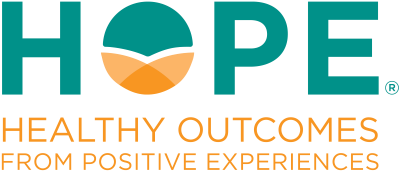
Creating a purposeful and data-focused action plan
In our last “Using data” blog post, we explored how to collect what matters and gather data that truly reflects your goals, values, and community. Now it’s time to turn that learning into action.
Action planning is where your purpose, data, and evaluation come together. It’s how we move from “What do we know?” to “What will we do next—and how will we know it’s working?”
How to start making an informed changed
Step 1: Start with your aim
Before building a plan, anchor your work in a clear aim statement:
What are we trying to improve, for whom, by how much, and by when?
Your aim helps keep the team focused and provides a shared direction. Here’s an example:
By December, increase the number of parents who report feeling welcomed and respected after their first appointment by 20% through the integration of HOPE-aligned language into all intake forms and materials.
A good aim should feel achievable, measurable, and meaningful. This example explains what the goal is, how it will be achieved, and when it will be achieved. It also sets the stage for choosing data you will need to measure whether you are achieving your aim.
Step 2: Identify the data you’ll need
Once your aim is clear, identify the data that will help you learn whether change is happening.
Ask:
- What outcomes will show that our efforts are working?
- What processes should we track along the way?
- Are there any balancing measures, or signals that our changes are creating unintended challenges?
You don’t have to start from scratch. Many teams begin with existing data and add a new data point or to capture information about things they wish they knew but haven’t been tracking yet.
This balance helps you stay realistic while still growing your capacity to learn. Check out our blog on collecting meaningful data for some more ideas in this area.
Step 3: Build your action plan
Now, translate those aims and measures into a concrete plan. Action planning turns ideas into doable steps – small, specific actions that keep your team learning as you go.
A strong action plan includes:
- Specific actions small enough to start tomorrow.
- Clear responsibilities where every task has an owner.
- Timeframes to create momentum.
- Dependencies that help you identify what needs to happen first.
- Built-in evaluation that allows you to understand whether the step was successful and includes evaluation as a consideration of the implementation from the beginning.
Step 4: Test, learn, and adjust
An action plan is not a static checklist – it is a learning tool.
Each action step is a mini-experiment, or a Plan-Do-Study-Act (PDSA) cycle. Try it, gather feedback, and adjust. Embedding reflection into your plan keeps the work adaptive, trauma-informed, and strengths-based.
Here’s an example:
If your aim is to increase positive feelings in parents during intake, one action step might be to pilot a 3-question feedback form for any intakes that occur over the coming week. You could also include a brief question or two that asks parents how they felt before and after completing the form. This would help you understand:
-
- Whether the questions might be helpful
- How parents felt while completing the form
- How feasible it was to integrate all of the questions into the intake process
This might help you decide what to include, when to include it, and how to collect data that will help you achieve your aim statement. For example, let’s imagine that after your pilot, you learn that the three questions are very helpful and parents respond positively. Or, let’s imagine that parents do not seem to feel comfortable sharing their feelings with you so early on in their work with you. In either case, you have a next step: move forward as planned or adjust and identify a new way to measure parents’ feelings during the intake process.
Bringing it all together
When you identify your aim, align your data, and design your action plan with evaluation built in, you create a feedback loop for continuous improvement.
Every plan tells a story
Start with what matters most, measure what matters, and take one actionable step toward your aim this month.


